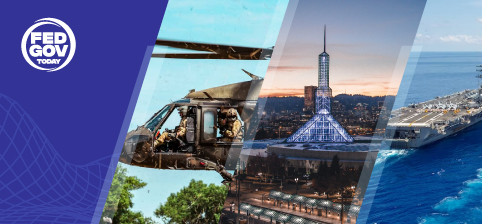For business and administrative teams in the public sector, especially those in intelligence or military, we find that they are not supported well with their work tracking tools. Often, they are unpleasant or improvised from basic office productivity tools like email and spreadsheets. This is why improving efficiencies and reducing costs can be a challenging but highly rewarding endeavor, with a lot of low-hanging fruit. Two of the most ‘fruitful’ areas we’ve helped clients with in the past years are HR processes (such as onboarding personnel) and stakeholder management. In this post, I want to outline how to effectively modernize your agency’s HR and Stakeholder Management workflows with a few tools.
 The Complexity of Staff Onboarding in the Public Sector
The Complexity of Staff Onboarding in the Public Sector
For public sector human resource (HR) departments, especially those with responsibility for military personnel, improving efficiencies and reducing costs can be challenging. One solution that is gaining traction is the use of workflow software applications.
With high turnover and biennial relocations commonplace in the military, onboarding and offboarding create a significant workload for HR departments. During these processes, many logistical questions need to be answered. For example:
- Does the new employee require security clearance, and what type(s)?
- Is a security card or badge necessary? If so, do they already have those items? Is it a new card or a renewal/reactivation?
- Have they worked here before?
- What kind of office and security/network equipment do they need?
- Have they filed the appropriate paperwork so they can get paid?
The fact that every new employee may be a civilian contractor, enlisted military member, military reservist, or one of many another classifications — each requiring a slightly different procedure — only adds to the complexity.
Unfortunately, in many government organizations, the processes that support these activities are poorly defined or, worse still, not defined at all. And even if a process is in place, the level of enforcement for approved procedures can vary significantly.
The Emergence of Workflow Applications
To address these challenges, more and more HR departments are developing formalized processes to drive efficiencies. Typically, a process engineer will work with senior departmental staff to define the process itself. Often, the process engineer needs to meet with many stakeholders throughout the organization to understand the process, because it hasn’t been fully documented in one place for years, and many process changes have been made both officially and unofficially. The process engineer will then work with the software to map all the individual steps and related dependencies using a workflow software application These applications are designed specifically to manage projects and track all changes and updates. As a result, they make it clear to users what steps must be followed and what tasks must be performed.
To get the whole project to work, it’s imperative that the system be easy to use, have visible support from senior personnel, and that users get hands-on training. With that, high levels of user adoption and process compliance have been achieved, even by our busiest DoD clients. Continuing to rely on non-collaborative or ephemeral tracking in spreadsheets, email, or on paper to handle such complex tasks and ever-changing regulations is no longer viable or efficient.
Improving Operational Efficiency
As the adoption of workflow applications has increased, government agencies are seeing significant efficiency gains and cost savings. While labor is likely to be an agency’s biggest cost center, many organizations do not know exactly how much time their HR department spends on onboarding and offboarding staff. However, it is clear these costs are significant. They also aren’t tracking the bottlenecks and true cost of delays.
For instance, an employee may be receiving payment based on their start date, but the slow pace of the onboarding process means they are not actively working and contributing until days or weeks later. Reducing the cycle time to onboard a new employee from 14 days to seven — and doing this for hundreds or even thousands of employees a year — has added up to millions of dollars in cost savings for our clients.
Workflow applications can also cut the costs associated with preparing for and attending update meetings. Providing a living document that is updated in real time makes it extremely efficient for staff with approved access to view the document and monitor the work and tasks being executed on an ongoing basis.
Stakeholder Management – A Modernized Option
Similar to tracking the onboarding of new personnel, our government and military customers also have difficulty tracking the relationships they have with stakeholders, in other parts of the government and military.
Our workflow applications have provided what is essentially a light “Customer Relationship Management” functionality, without the complexity of deploying a heavy CRM tool. For example, a workflow application could be used to track and note all interactions between an organization and external personnel, such as with senators, congressional staff, or personnel from other agencies. These interactions can have metadata about participants and departments present, topics covered, deliverables committed to, follow-ups required, and could then be easily referenced before future meetings.
Our customers have found these ‘Strategic Engagements Tracking’ tools to provide valuable insight, reduced cost and improved efficiency.
For more information on deploying these types of solutions and training for users, please contact Justin’s team at HyperVelocity at hello@hypervelocityconsulting.com or 24/7 at 866-250-4157.






